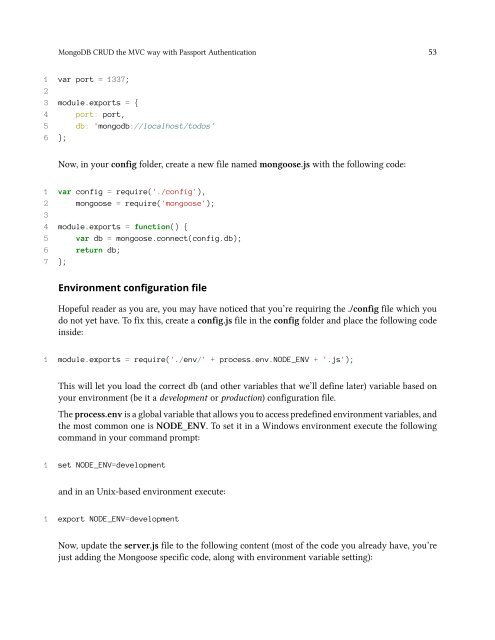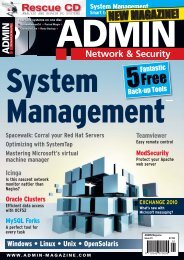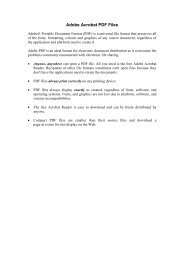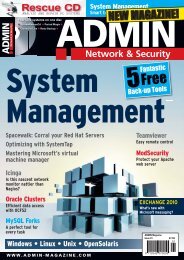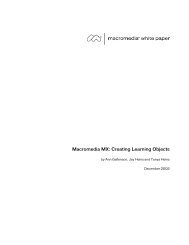Mittwoch, 18. Mai, 2016
Create successful ePaper yourself
Turn your PDF publications into a flip-book with our unique Google optimized e-Paper software.
MongoDB CRUD the MVC way with Passport Authentication 53<br />
1 var port = 1337;<br />
2<br />
3 module.exports = {<br />
4 port: port,<br />
5 db: 'mongodb://localhost/todos'<br />
6 };<br />
Now, in your config folder, create a new file named mongoose.js with the following code:<br />
1 var config = require('./config'),<br />
2 mongoose = require('mongoose');<br />
3<br />
4 module.exports = function() {<br />
5 var db = mongoose.connect(config.db);<br />
6 return db;<br />
7 };<br />
Environment configuration file<br />
Hopeful reader as you are, you may have noticed that you’re requiring the ./config file which you<br />
do not yet have. To fix this, create a config.js file in the config folder and place the following code<br />
inside:<br />
1 module.exports = require('./env/' + process.env.NODE_ENV + '.js');<br />
This will let you load the correct db (and other variables that we’ll define later) variable based on<br />
your environment (be it a development or production) configuration file.<br />
The process.env is a global variable that allows you to access predefined environment variables, and<br />
the most common one is NODE_ENV. To set it in a Windows environment execute the following<br />
command in your command prompt:<br />
1 set NODE_ENV=development<br />
and in an Unix-based environment execute:<br />
1 export NODE_ENV=development<br />
Now, update the server.js file to the following content (most of the code you already have, you’re<br />
just adding the Mongoose specific code, along with environment variable setting):


